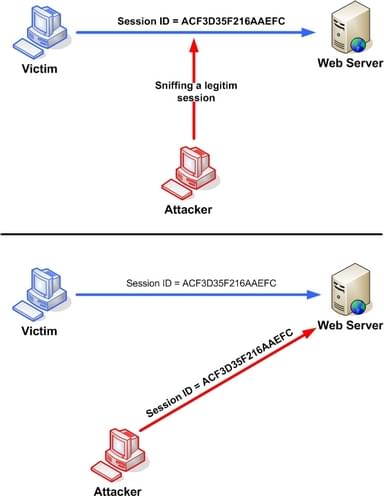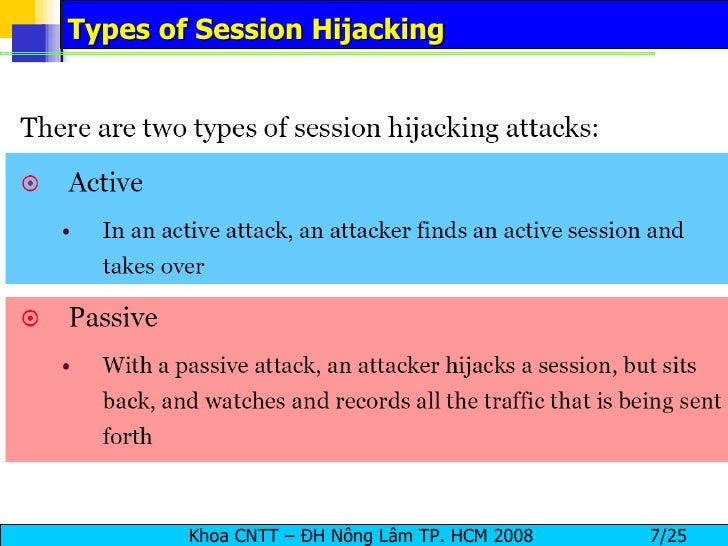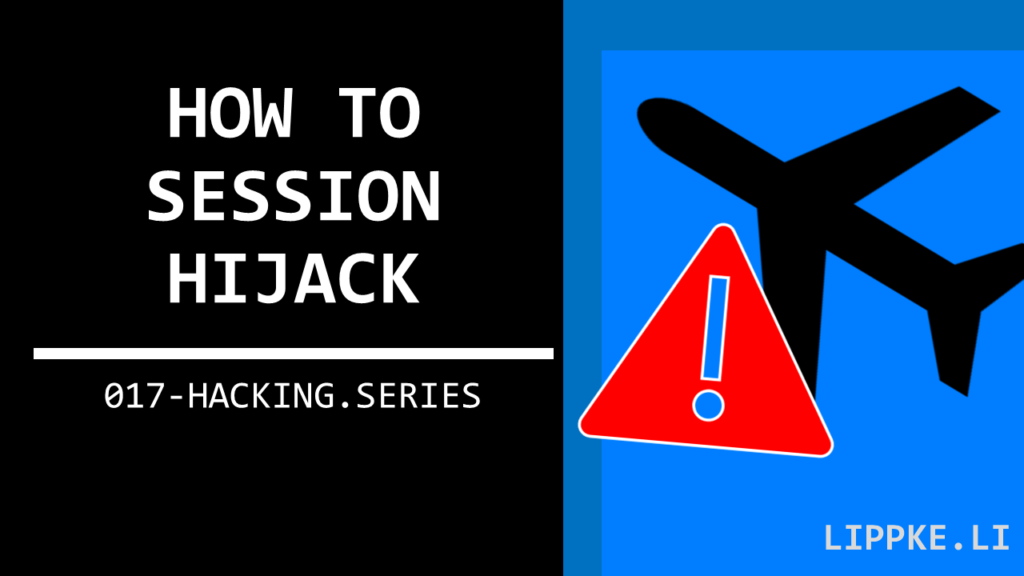

- #Session hijacking how to
- #Session hijacking install
- #Session hijacking update
- #Session hijacking code
- #Session hijacking password

Educate admin users: Make sure all users with administrative privileges understand the risks of session hijacking and the steps they can take to prevent it.
#Session hijacking update
Update WordPress, themes, and plugins frequently: Keep your website software up-to-date to minimize the risk of vulnerabilities being exploited by attackers.
#Session hijacking password
Implement strong password policies: Encourage users to create strong, unique passwords and implement password policies that require passwords to be changed regularly and meet certain complexity requirements.This method requires users to provide a second form of identification along with their username and password, thereby enhancing the overall security of the account. Use two-factor authentication: Incorporate Two-factor authentication (2FA) as an additional security measure for user accounts.Therefore, it is crucial to ensure that your site uses HTTPS to secure your users’ sessions. By encrypting the data sent between the user’s browser and the server, attackers will find it extremely difficult to steal such data. Use SSL: It is imperative to use Secure Sockets Layer (SSL) to strongly protect sensitive information, including cookies, from interception or theft.Use a comprehensive security solution like MalCare that can easily scan your site. This can help you identify any vulnerabilities that attackers may have exploited to steal cookies.
#Session hijacking code
#Session hijacking how to
How to recover from a cookie stealing attack? In the next section, we’ll discuss some of the best ways to fight the cookie thieves. With so many different ways that cookies can be stolen, it’s important to take steps to fix the gaps in security. Trojans are often spread through email attachments or infected downloads. Trojans are a type of malware that can give attackers access to a user’s computer, allowing them to steal cookies and other sensitive data. This type of attack can occur on unsecured Wi-Fi networks, for example.


In a MITM attack, attackers intercept communication between the user’s browser and the website, allowing them to steal cookies or other sensitive information. This method of cookie theft can be particularly dangerous as it can affect large numbers of users.
#Session hijacking install
Malware from exploited vulnerabilitiesĪttackers can exploit vulnerabilities in website software to install malware that can steal cookies from users who visit the site. They contain information about the user’s session and preferences, allowing the website to remember them and offer personalized experiences.ģ. Cookies are small text files that are stored on a user’s computer when they visit a website. What is cookie stealing?Īt its core, cookie stealing is a form of cyber attack that involves stealing cookies from a user’s computer to gain access to their data or login information. Another important solution is to install a firewall with MalCare as a preventative measure. Protecting against cookie theft involves implementing security measures like ensuring that your site has SSL encryption. In this article, we’ll discuss the dangers of cookie stealing and provide you with practical advice on how to safeguard your site and your users.Ĭookie stealing is a serious threat to website security, potentially compromising sensitive user data and site functionality. Additionally, if a user is logged into your site and their cookies are stolen, this could lead to serious issues if they have admin access.īut don’t panic. For one, your site could be used as an attack vector if it has an XSS vulnerability. There are a couple of ways that cookie stealing could cause problems for you. And while cookie stealing security advice online is typically geared towards users and site visitors, it’s important to understand that as a site owner, you’re also at risk from these types of WordPress attacks. Cybercriminals can quietly steal information from unsuspecting website visitors by stealing their cookies.


 0 kommentar(er)
0 kommentar(er)
